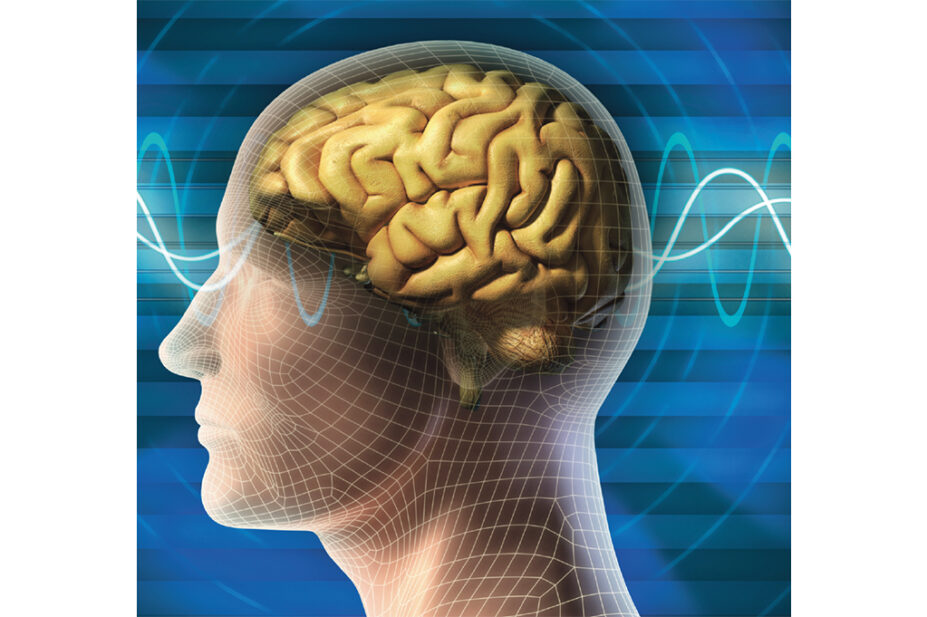
ANDREUS/DREAMSTIME.COM
NZT-48 was the drug of choice in the US thriller “Limitless”. The claim was that the main character, a struggling author, was able to access 100 per cent of his brain capacity instead of the “usual” 20 per cent. The film revolved around the possibilities of this increased aptitude, ranging from immediate inspiration to complete a best-selling manuscript to identifying and capitalising on trends in the stock market. The opportunities were wild and dramatic but then the withdrawal symptoms were just as extreme to drive the fast-paced drama and excitement towards maintaining a constant supply and funding a personal laboratory scientist to work on more effective derivatives1.
This dramatic representation, as is commercially appropriate, provides an extreme perspective of a potential user of cognitive enhancers. However, recent press has alluded to the growing trend of these agents in performance- and image-enhancing drug misuse. Many people are sourcing these agents, otherwise used for medical conditions, over the internet to improve memory or focus. Newsnight and New Scientist, in 2011, found out that 38 per cent of participants in their survey (n=781, not generalisable to the population) had taken a cognitive enhancer at least once (with 40 per cent being bought online) and 92 per cent saying they would take it again.
Drugs mentioned for this purpose included modafinil (to treat sleep disorders), Ritalin and Adderall (to treat attention deficithyperactivity disorder)2. Anecdotal experiences have been interesting, with users expressing their increased capacity to concentrate for extended hours, with one student at the University of Harvard telling the Washington Post that he had not “written a paper without Ritalin since my junior high school”3.
In June 2009, The Independent presents an argument that human enhancement is a natural process of evolution and that society should want improvement and development. The discussion continued to include that a key drug in question, Ritalin, has been deemed safe for use in children, and that the arguments against its use have not been persuasive enough3.
Further counteractions have demanded to know why this form of “advantage” during examination or academic assessments should be deemed more unfair than hiring a private tutor or paying for exam coaching,3 which might also contribute to the two-tiered education system that is dependent on those who can or cannot afford extra investment, pharmacologically or otherwise.2 An interview carried out by the BBC also presented a view that if a safe form of cognitive enhancement could be found, society as a whole might benefit4.
The issues associated with use have also been a point of contention: Ritalin has adverse effects on the heart and carries a risk of sudden death, and shares other stimulants’ side effects, such as dizziness, insomnia, loss of appetite and depression on withdrawal3.
How do they work?
It is vital that pharmacists are aware of the mode of action of cognitive-enhancing drugs (also called “smart drugs”), their side effects and contraindications. We will look atmethylphenidate, atomoxetine, donepezil and modafinil.
Methylphenidate
Methylphenidate is a central nervous system stimulant. It binds to the dopamine transporter in the striatial presynaptic neurons, thus inhibiting dopamine reuptake and causing increased extracellular dopamine levels. Studies have also shown an inhibitory effect on noradrenaline and serotonin reuptake5.
It is approved in the UK for the treatment of ADHD in children over six years old and it is believed that its behavioural effects are due to its dopaminergic activity. It is not licenced for use in adult and elderly patients6. However, several clinical studies have demonstrated methylphenidate’s efficacy in adult groups with CNS disorders who can benefit by an increase in dopaminergic activity (eg, depressive illness, narcolepsy or cognitive enhancement in patients with HIV).
The use of methylphenidate by healthy individuals can increase concentration, alertness and focus to a task as a result of the dopaminergic effect. But at what cost? The dopaminergic activity of methylphenidate may lead to euphoria and addiction (its mode of dopaminergic action is similar to that of cocaine). Existing behavioural problems and CNS disorders such as bipolar disease and psychosis can be exacerbated and the peripheral effects of methylphenidate, due to increased adrenaline concentration in plasma, must not be underestimated because it can lead to or exacerbate heart problems. Methylphenidate is therefore contraindicated in individuals with high blood pressure, heart defects or a family history of heart problems6.
Atomoxetine
Atomoxetine is licenced in the UK for the management of ADHD in children above six years and in young adults7. It is a selective noradrenaline reuptake inhibitor, causing increased levels of noradrenaline in the CNS and subsequent improvement in alertness, attention and focus. Because it does not have a dopaminergic effect it is regarded as having no addiction potential compared with methylphenidate. Nevertheless, its adrenergic affect can lead to cardiotoxicity. It is therefore contraindicated in individuals with existing cardiac defects or heart problems. It can also instigate suicidal thoughts and the onset of psychotic symptoms, aggressive behaviour and hostility.
Donepezil
Donepezil is licenced in the UK for the treatment of mild to moderately severe symptoms of Alzheimer’s dementia. It improves mental faculties, such as attention, memory and social interaction in patients with Alzheimer’s disease — symptoms that are due to reduced levels of acetylcholine in the brain. Donepezil is a selective reversible cholinesterase inhibitor in the CNS, leading to increased acetylcholine concentration and stimulation of muscarinic receptors. Studies in mice have also indicated an increase in hippocampal production of insulin-like growth factor I and a protective effect against neurodegeneration8,9.
Donepezil’s side effects are due to its cholinergic activity. It can cause diarrhoea, nausea, vomiting and CNS effects such as insomnia.
Studies on the use of donepezil in healthy adults have shown improvement in perceptual learning and learning of new skills10,11. However, a recent study in older healthy individuals showed negative cognitive effects, such as a significant decrease in memory12.
It is believed that the cognitive effect of donepezil depends on the mental status of the individual, with positive effects being more common when external aggravating factors, such as sleep deprivation, are responsible for the reduced cognitive performance12.
Modafinil
Modafinil is licenced in the UK for the treatment of excessive daytime sleepiness that is associated with narcolepsy and where the patient may experience falling asleep during inappropriate situations13. Modafinil selectively acts at brain regions that regulate normal wakefulness. Its exact mechanism of action is not known but it is believed to involve histamine, gamma-aminobutyric acid (GABA), glutamate and hypocretin. Studies have shown, however, that the use of modafinil by sleep-deprived healthy adults does not seem to offer advantages compared with caffeine consumption for improving alertness and concentration14.
Modafinil is contraindicated in individuals with high blood pressure and cardiac arrhythmias. Also patients with history of psychiatric disorders, anxiety and psychotic symptoms should avoid modafinil13.
What is in the pipeline?
In the future, potential interventions that might enhance or repair brain function may be surgical rather than pharmacological. This could include the use of stem cells to encourage growth of new brain cells to replace dead ones. Other extremes may include physical and mental exercise and diet regimens, with or without pharmacotherapy to enhance mental performance.
Pharmacotherapy itself will be driven by the growing knowledge of brain function and the identification of drug targets in normal and diseased pathophysiology. Key agents currently being investigated include:
- Glutamate and agents potentiating glutamate signalling, which is involved in memory building and recalling through increased synaptic signalling;
- Agents modulating calcium flow into cells are being investigated to balance excessive flow, leading to neurotoxicity, with enhanced flow to increase synaptic activity;
- Agents that open potassium M-channels have the potential for neuroprotection and treatment of epilepsy;
- Phosphodiesterase inhibitors, which indirectly enhance the action of a protein that acts as a switch to turn newly acquired knowledge into long-term memory;
- Targets for acetylcholine offer neuroprotection and have shown improvement in cognitive performance in early human trials.
These are just a few examples with others, including agents modulating dopamine, serotonin, GABA, the cannabinoid system, histamine, neurohormones and neuropeptides, also in the pipeline. The pace and success rate of these drug in development may be increased by the changes and developments in pharmacological technologies, including high throughput screening for potential drug candidates, nanotechnology and rational drug design15.
Conclusion
The widespread use of these cognitive enhancers for otherwise healthy people could have a significant impact on health, social, economic, ethical and regulatory fronts. Together with the lack of regulatory mechanisms for these agents, and potentially with the social changes and commercial pressures, use may be increasingly required, desired and accepted. If treatments prove to be cost-effective, safe and enhance function and quality of life in disease-related impairments, the controversy may persist towards their ethical use for “healthy” personal enhancement.
- 1.Limitless. IMDB. Accessed December 2012. https://www.imdb.com/title/tt1219289/
- 2.Watts S. The dope on mental enhancement. New Scientist. November 2011. Accessed December 2012. https://www.newscientist.com/article/dn21157-the-dope-on-mental-enhancement/
- 3.Laurance J. Mind-enhancing drugs: Are they a no-brainer? The Independent . June 2009. Accessed December 2012. https://www.independent.co.uk/news/science/mindenhancing-drugs-are-they-a-nobrainer-1708988.html
- 4.Do cognitive-enhancing drugs work? BBC News. November 2011. Accessed December 2012. https://www.bbc.co.uk/news/health-15600900
- 5.Challman TD, Lipsky JJ. Methylphenidate: Its Pharmacology and Uses. Mayo Clinic Proceedings. 2000;75(7):711-721. doi:10.4065/75.7.711
- 6.Methylphenidate. Electronic Medicines Compendium. Accessed December 2012. https://www.medicines.org.uk/emc/ingredient/1374#gref
- 7.Atomoxetine. Electronic Medicines Compendium. Accessed December 2012. https://www.medicines.org.uk/emc/search?q=Atomoxetine
- 8.Donepezil. Electronic Medicines Compendium. Accessed December 2012. https://www.medicines.org.uk/emc/search?q=Donepezil
- 9.Donepezil. Medmerits. Accessed December 2012. www.medmerits.com
- 10.Alzheimer’s drug boosts perceptual learning in healthy adults. Science Daily. September 2010. Accessed December 2012. https://www.sciencedaily.com/releases/2010/09/100916121326.htm
- 11.Alzheimer’s disease drug found to boost learning in healthy adults. World Health. Accessed December 2012. www.worldhealth.net
- 12.Balsters JH, O’Connell RG, Martin MP, et al. Donepezil Impairs Memory in Healthy Older Subjects: Behavioural, EEG and Simultaneous EEG/fMRI Biomarkers. Annala AJ, ed. PLoS ONE. 2011;6(9):e24126. doi:10.1371/journal.pone.0024126
- 13.Modafinil. Electronic Medicines Compendium. Accessed December 2012. https://www.medicines.org.uk/emc/search?q=Modafinil
- 14.Modafinil. Medmerits. Accessed December 2012. www.medmerits.com
- 15.Jones R, Morris K, Nutt D. Cognition Enhancers. Drugs and the Future. Published online 2007:241-283. doi:10.1016/b978-012370624-9/50011-6


